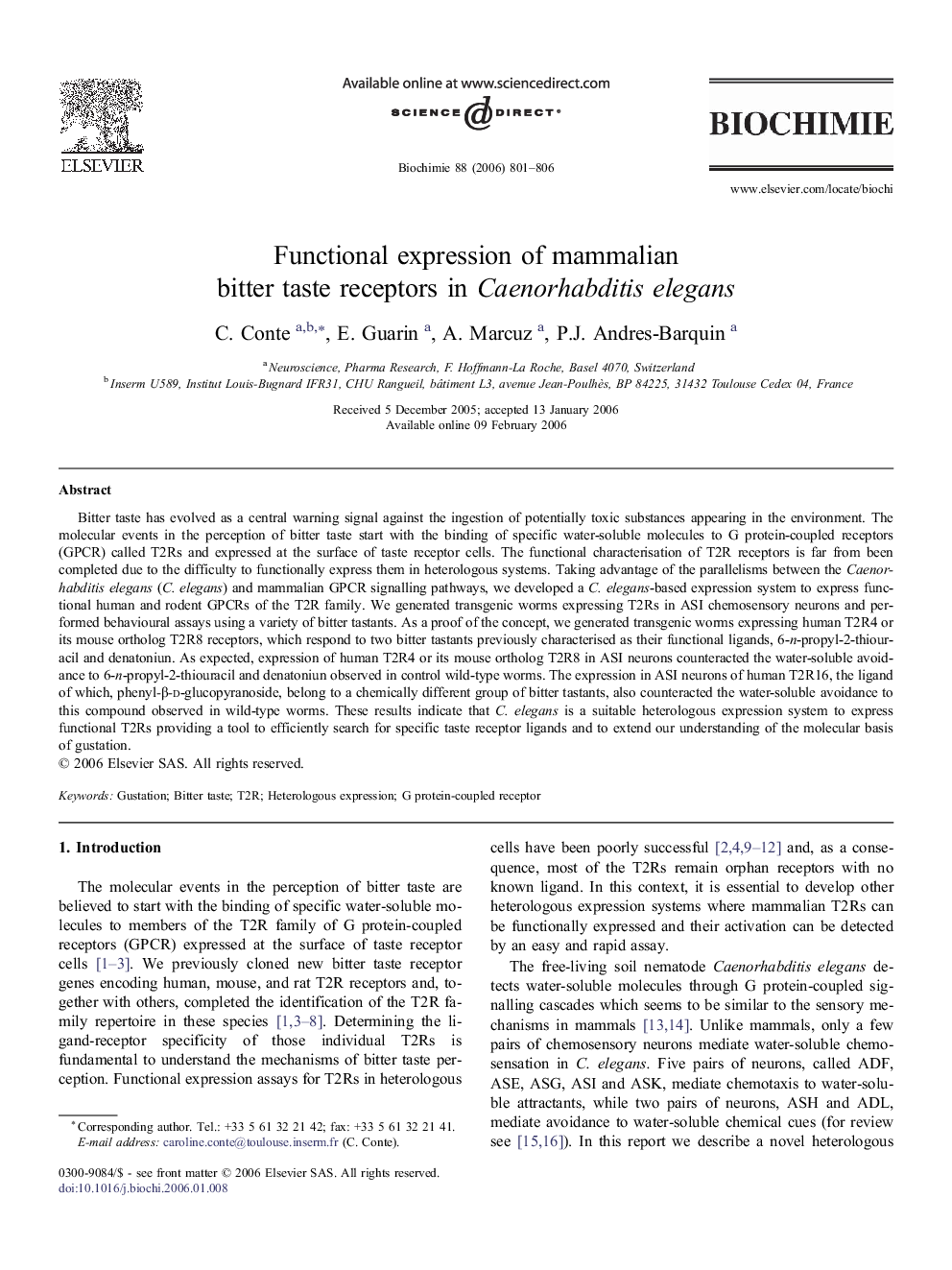| Article ID | Journal | Published Year | Pages | File Type |
|---|---|---|---|---|
| 1953190 | Biochimie | 2006 | 6 Pages |
Bitter taste has evolved as a central warning signal against the ingestion of potentially toxic substances appearing in the environment. The molecular events in the perception of bitter taste start with the binding of specific water-soluble molecules to G protein-coupled receptors (GPCR) called T2Rs and expressed at the surface of taste receptor cells. The functional characterisation of T2R receptors is far from been completed due to the difficulty to functionally express them in heterologous systems. Taking advantage of the parallelisms between the Caenorhabditis elegans (C. elegans) and mammalian GPCR signalling pathways, we developed a C. elegans-based expression system to express functional human and rodent GPCRs of the T2R family. We generated transgenic worms expressing T2Rs in ASI chemosensory neurons and performed behavioural assays using a variety of bitter tastants. As a proof of the concept, we generated transgenic worms expressing human T2R4 or its mouse ortholog T2R8 receptors, which respond to two bitter tastants previously characterised as their functional ligands, 6-n-propyl-2-thiouracil and denatoniun. As expected, expression of human T2R4 or its mouse ortholog T2R8 in ASI neurons counteracted the water-soluble avoidance to 6-n-propyl-2-thiouracil and denatoniun observed in control wild-type worms. The expression in ASI neurons of human T2R16, the ligand of which, phenyl-β-d-glucopyranoside, belong to a chemically different group of bitter tastants, also counteracted the water-soluble avoidance to this compound observed in wild-type worms. These results indicate that C. elegans is a suitable heterologous expression system to express functional T2Rs providing a tool to efficiently search for specific taste receptor ligands and to extend our understanding of the molecular basis of gustation.
